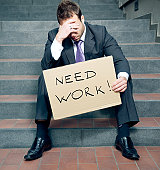 The Daily Caller is reporting that the precipitous drop in the national unemployment rate below the eight percent mark a month before the election has done more than just fuel debate over its credibility. It has prompted calls for a whole new way of reporting these numbers.
The Daily Caller is reporting that the precipitous drop in the national unemployment rate below the eight percent mark a month before the election has done more than just fuel debate over its credibility. It has prompted calls for a whole new way of reporting these numbers.
California Republican Rep. Duncan Hunter sponsored legislation in March to change the way the unemployment rate is calculated. Called the Real Unemployment Calculation Act, it has 27 co-sponsors.
"The problem, as I see it, is the growing group of Americans who are left out of the official unemployment rate,” Congressman Hunter told The Daily Caller News Foundation in an email. “If we are serious about understanding the full unemployment situation, and adjusting our response by what we know, then we need to pay attention to a figure that accounts for anyone out of a job, not just those who are actively looking for work.”
When last week's 7.8 percent figure came out, Hunter wrote to the chairman of the House Education and the Workforce Committee to stress the need for this bill to be passed.
“It is critical that leaders in government and the American people have the most accurate and reliable information to make informed judgments about the future,” the letter says.
“My concern is that the official U3 rate, now at 7.8 percent, carelessly disregards a core group of jobless Americans who are ready and willing to work, but simply gave up their searches because they are too discouraged for different reasons.”
As the Daily Caller explains, the U3 number is the primary number used amongst the media when discussing the unemployment rate, however the number does not include discouraged workers who are no longer seeking employment, or the underemployed, people working below their skill level.
The U6 number includes these subsets, and this number was 14.7 for September - nearly double the U3 rate.
Then came the new jobless claims numbers which were largely touted as having dropped to a four year low of 339,000. However, it was quickly learned that the decline was due to a large state failing to accurately report their claims. In other words, it has nothing to do with gains in hiring as the American public was led to believe.
These disparate numbers may finally spark lawmakers to do something about the erroneous reporting that many believe is being touted for political purposes rather than for the need to keep the American public accurately informed about the state of the nation's economy.
House Government Oversight Committee Chairman Darrel Issa told Fox News' Greta Van Susteren on Thursday night that he is interested in doing a Congressional hearing over the matter.
“…the way it’s being done with the constant revisions, significant revision, tells us that it’s not as an exact a science as it needs to be and there’s got to be a better way to get those numbers or don’t put them out if they’re going to be wrong by as much as half a point,” Issa said.
Although these changes will not be in place in time for the election, the public will be well-advised to refrain from betting any big money on the belief that the job market will be improving any time soon.
© All Rights Reserved, Living His Life Abundantly®/Women of Grace® http://www.womenofgrace.com
